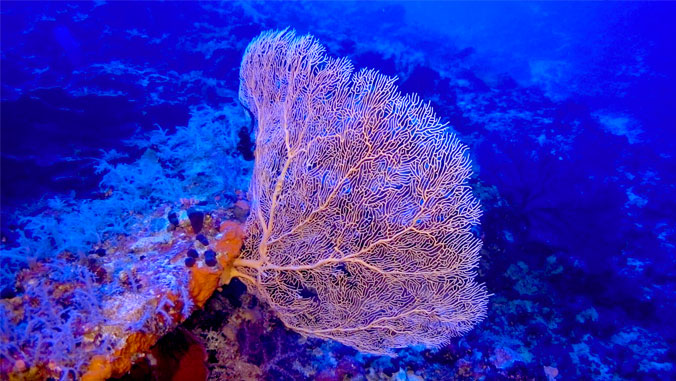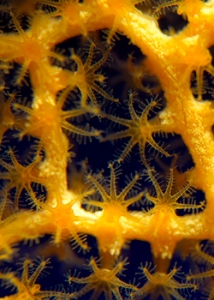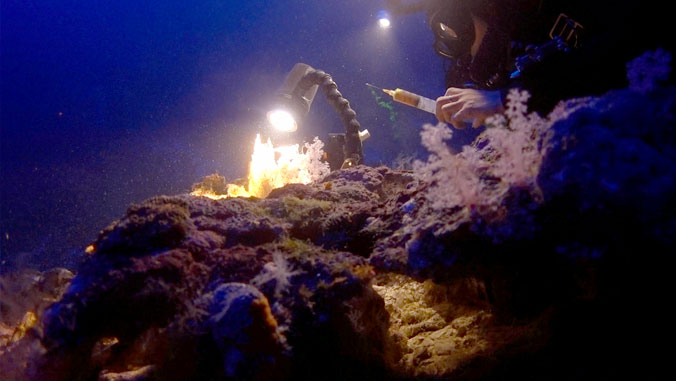
This past summer, researchers from the University of Hawaiʻi at Mānoa completed a field expedition to the Senyavin Islands in the Federated States of Micronesia involving a unique combination of reef ecology and water chemistry assessment, mathematics and data visualization. Through this work, UH faculty members and students connected with community and conservation leaders in Micronesia. They are sharing information that helps advance conservation efforts, which mitigate the effects of overfishing and marine resource exploitation, and prepares for sea-level rise.
Sonia Rowley, a scientist in the UH Mānoa School of Ocean and Earth Science and Technology (SOEST), has been conducting research throughout the Senyavin Islands since 2014 and leading annual research expeditions since 2015. Advances in rebreather technology have allowed dives to depths of 525 feet. Her award-winning research has focused on the biological success of gorgonian corals, the most diverse and abundant species group at these depths. These deep Mesophotic Coral Ecosystems (MCEs) are among the most diverse yet most unexplored realms on the planet.
In recent years, however, Rowley’s expeditions have also documented the change in reef health down to 525 feet deep throughout the region including the significant coral bleaching and reef degradation due to the El Niño events in 2016 and 2017.

Over the last year, Rowley has been working with SOEST geochemist Henrietta Dulai to assess human-derived sources of contamination related to water quality in the region. They are analyzing human pollution tracers, for example, pharmaceuticals, to assess the relative contribution of human encroachment on the declining health of the reefs.
New visualizations and math tools
Monique Chyba, a UH Mānoa mathematician, had been working on mathematical methods based on the emerging field of topological data analysis to analyze datasets as well as developing visualization tools, including virtual reality, as research instruments.
The two researchers teamed up after Chyba approached Rowley about using virtual reality to image and assess the reefs that Rowley had been researching. They added to this data with the expedition this summer, which took the researchers to Ant Atoll, a UNESCO heritage site in the Senyavin Islands, where Chyba was present for 10 days of fieldwork during the month-long expedition. In addition to deep diving for sample collection, experimentation, environmental instrumentation retrieval and deployment, and photogrammetry, they utilized unmanned aerial vehicles and underwater 360-degree videography, which are now enabling virtual reality representations of the study areas.
Connecting research with community efforts
“I have worked closely with local communities in the past several years,” said Rowley. “They are deeply committed to furthering conversation efforts, particularly under current marine resource exploitation and global climate change. Exploration and research of MCEs, particularly of oceanic islands and atolls of the Pacific, is in its infancy and not only reveals species and ecological patterns new to science but must also shape conservation management decisions.”
The objective of the recent collaboration is to expand beyond data collection and produce a comprehensive study of the responses of mesophotic and shallow reef ecosystems over the past few years. Demonstrating how reef systems can change across a wide depth range during significant climatic events coupled with rapidly advancing resource exploitation is critical to understand ecosystem and species responses to global climate change. Additionally, and for the first time, a specific effort will be made to design visualizations, including an augmented reality platform that will communicate effectively with local experts and decision makers.
See the full story on the SOEST website.
Learn more about research being done at SOEST.
—By Marcie Grabowski


